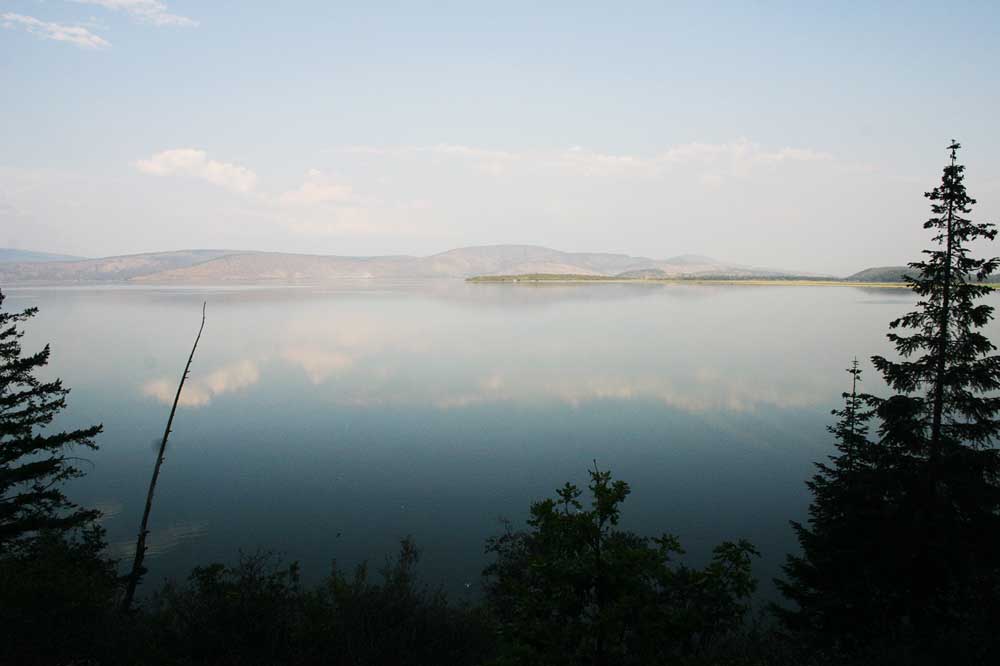Proposal would reduce Klamath River flows to fill Upper Klamath Lake
Published 8:30 am Tuesday, January 10, 2023

- Upper Klamath Lake
KLAMATH FALLS, Ore. — The federal government is proposing to reduce flows in the Klamath River by as much as 40% until April to meet minimum water levels for endangered sucker fish in Upper Klamath Lake amid ongoing drought.
Cutbacks are needed due to “extraordinary hydrologic conditions,” according to the Bureau of Reclamation in a draft management plan for the Klamath Project.
While the last several weeks have brought much-needed rain and snow to the Klamath Basin, the region is still mired in severe and extreme drought.
As of Jan. 4, overall precipitation was 112% of normal for the water year dating back to Oct. 1. However, Reclamation expects Upper Klamath Lake will be 15,000 to 30,000 acre-feet below its target elevation of 4,142.2 feet by April 1, unless water managers take action.
Minimum lake elevations are needed to protect critical shoreline spawning habitat for C’waam and Koptu, two species of endemic and endangered sucker fish.
To accomplish this, Reclamation would limit water releases from Upper Klamath Lake into the Klamath River to build up storage.
Flows would initially be reduced by 14% below Iron Gate Dam beginning Jan. 13, though Reclamation could reduce flows by a maximum of 40% based on changing hydrological conditions — as long as risks to the river system “are deemed to be justified” to meet minimum water elevations in Upper Klamath Lake.
C’waam and Koptu are culturally important to the Klamath Tribes. The species were listed as endangered in 1988, and face extinction without intervention.
But the issue remains a delicate balancing act. Downriver tribes based in northern California have expressed concern that reducing Klamath River flows will further harm vulnerable salmon runs below Iron Gate Dam.
Matt Mais, a spokesman for the Yurok Tribe, said the flow cuts would “definitely” be harmful to the river.
“We have dedicated our lives to protecting and restoring this river, and this would represent a major step backwards in these efforts,” Mais said. “We support large-scale upper basin restoration projects that would integrate ecosystem function for (fish) and would alleviate the need for minimum flows and lake levels as a stopgap measure for bare survival.”
Reclamation has pledged to work with the tribes and National Marine Fisheries Service on a monitoring plan to map the locations of salmon redds, or nests, and adapt river flows on a weekly basis to protect juvenile fish.
Tribes and irrigators have until Jan. 11 to submit comments before Reclamation finalizes the proposal.
Moss Driscoll, water policy director for the Klamath Water Users Association, said the group has spent months advocating for Reclamation to “fill the lake.” The campaign has included writing letters to agency heads, elected officials and putting the message on a billboard in Klamath Falls.
“I think we’ve certainly brought attention to the issue, and forced Reclamation’s hand probably earlier than they would have done,” Driscoll said.
Given three consecutive years of drought, and possibly a fourth this year, filling Upper Klamath Lake is needed to best satisfy water demands for species in the basin, Driscoll said.
Not only will it maximize habitat for suckers, but also set aside enough water for later in the spring for a “flushing flow” down the Klamath River to wash away tiny parasites known as C. shasta that infect and kill salmon. C. shasta thrives in warm, slow-flowing water.
Driscoll said it is likely that farms in the Klamath Project will receive just a fraction of their normal water allocation for the 2023 irrigation season, which he blamed on continued mismanagement of the system.
Last year, producers idled more than 30,000 acres of farmland due to a lack of available water. Driscoll said he expects a similar outcome this year, adding “there is no forecast that we see right now that has us full at any point.”
“The way the lake has been managed for the last 20 years has been ineffective,” Driscoll said. “There’s been no results in terms of survival and success of the species, and yet nobody is saying it’s time to start managing differently.”






